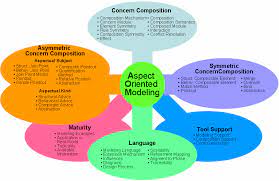Article: Software Developer
The Role of a Software Developer in Today’s Digital World
In the rapidly evolving landscape of technology, software developers play a crucial role in shaping the digital world we live in. These skilled professionals are responsible for designing, creating, and maintaining the software applications that power our daily lives.
Software developers utilize their expertise in programming languages such as Java, C++, Python, and more to write code that enables various software systems to function efficiently. They work closely with designers, project managers, and other stakeholders to understand requirements and deliver solutions that meet user needs.
From developing mobile apps to designing complex enterprise software systems, software developers are versatile problem-solvers who thrive on challenges. Their ability to think logically, troubleshoot issues, and adapt to new technologies make them invaluable assets in any tech-driven organization.
Continuous learning is a hallmark of the software development field. Developers must stay updated on emerging trends, tools, and best practices to remain competitive in the industry. Whether it’s mastering a new programming language or exploring innovative development methodologies, staying ahead of the curve is essential for success.
Collaboration is another key aspect of being a software developer. Working in teams allows developers to leverage collective expertise and creativity to tackle complex projects efficiently. Effective communication skills are vital for sharing ideas, providing feedback, and ensuring project milestones are met.
As technology continues to advance at a rapid pace, the demand for skilled software developers shows no signs of slowing down. Organizations across industries rely on these professionals to drive innovation, enhance user experiences, and streamline business operations through custom software solutions.
In conclusion, software developers play a pivotal role in shaping the digital landscape we inhabit today. Their technical prowess, problem-solving abilities, and collaborative mindset make them indispensable contributors to the ever-evolving world of technology.
Top 9 Benefits of Being a Software Developer
- High earning potential
- Opportunities for remote work
- Continuous learning and skill development
- Creative problem-solving challenges
- Variety of industries to work in
- Ability to make a tangible impact through software solutions
- Collaborative team environments
- Flexibility in work hours and projects
- Growing demand for skilled professionals
6 Challenges Faced by Software Developers: From High Stress to Limited Work-Life Balance
- High stress levels due to tight deadlines and project demands
- Sedentary lifestyle with long hours of sitting in front of a computer
- Continuous need for learning and staying updated on evolving technologies
- Potential for burnout from working on complex and challenging projects
- Limited work-life balance, especially during crunch times or project deadlines
- Possibility of encountering coding errors or bugs that require extensive troubleshooting
High earning potential
Software developers enjoy a high earning potential due to their in-demand skills and expertise in the tech industry. With the rapid growth of technology-driven businesses and the increasing reliance on software solutions, companies are willing to offer competitive salaries and benefits to attract top talent in the field. Additionally, software developers who specialize in niche areas or possess advanced certifications often command even higher compensation packages, making it a lucrative career choice for those looking to maximize their earning potential.
Opportunities for remote work
Software developers enjoy the significant advantage of abundant opportunities for remote work. With the rise of digital communication tools and cloud-based collaboration platforms, developers can effectively perform their tasks from anywhere in the world. This flexibility not only promotes a better work-life balance but also opens up doors to a diverse range of projects and clients beyond geographical boundaries. Remote work empowers software developers to choose their preferred environment, leading to increased productivity and job satisfaction.
Continuous learning and skill development
Continuous learning and skill development are fundamental aspects of being a software developer. In the fast-paced and ever-evolving field of technology, staying current with the latest trends, tools, and programming languages is essential for professional growth. By actively seeking out opportunities to expand their knowledge and expertise, software developers not only enhance their problem-solving abilities but also remain competitive in the industry. Embracing a mindset of lifelong learning allows developers to adapt to changing demands, explore new possibilities, and contribute effectively to innovative software solutions that meet the needs of today’s digital world.
Creative problem-solving challenges
Software developers excel in creative problem-solving challenges, where their ingenuity and analytical skills are put to the test. Faced with complex issues and constraints, developers leverage their innovative thinking to devise elegant solutions that address the root cause of the problem. This ability to approach challenges from different angles and think outside the box not only enhances their problem-solving capabilities but also leads to the development of efficient and effective software solutions that meet user needs effectively.
Variety of industries to work in
Software developers enjoy the advantage of having a wide range of industries to choose from when it comes to their career path. Whether it’s healthcare, finance, entertainment, or manufacturing, software developers can apply their skills and expertise across diverse sectors. This versatility not only offers developers the opportunity to explore different domains and expand their knowledge but also allows them to make a significant impact in various fields by creating innovative solutions tailored to specific industry needs. The abundance of industries seeking software development talent ensures that developers can find a rewarding and fulfilling career path that aligns with their interests and aspirations.
Ability to make a tangible impact through software solutions
Software developers possess the remarkable ability to make a tangible impact through their innovative software solutions. By leveraging their technical expertise and problem-solving skills, software developers have the power to create applications and systems that address real-world challenges, streamline processes, enhance user experiences, and drive business growth. Their capacity to transform ideas into functional software solutions not only improves efficiency and productivity but also opens up new possibilities for organizations and individuals alike. The tangible outcomes of their work serve as a testament to the invaluable contributions that software developers make in shaping a more connected and technologically advanced world.
Collaborative team environments
In collaborative team environments, software developers thrive by leveraging their collective expertise and creativity to tackle complex projects efficiently. By working closely with designers, project managers, and other stakeholders, developers can effectively share ideas, provide valuable feedback, and ensure that project milestones are met. Effective communication skills are essential in fostering a cohesive team dynamic where individuals can contribute their unique perspectives towards a common goal. This collaborative approach not only enhances the quality of software development but also promotes a culture of innovation and continuous improvement within the team.
Flexibility in work hours and projects
Software developers enjoy the benefit of flexibility in both their work hours and the projects they undertake. This freedom allows them to structure their schedules in a way that suits their productivity levels and personal commitments. Additionally, being able to choose from a variety of projects enables developers to work on tasks that align with their interests and expertise, fostering creativity and job satisfaction. The ability to adapt their working hours and project choices not only enhances work-life balance but also contributes to increased motivation and overall job performance.
Growing demand for skilled professionals
The growing demand for skilled software developers reflects the pivotal role they play in driving technological innovation across industries. As businesses increasingly rely on custom software solutions to enhance efficiency and competitiveness, the need for talented professionals who can design, develop, and maintain these applications continues to rise. Skilled software developers are sought after for their ability to create cutting-edge solutions that meet evolving user needs and business requirements, making them invaluable assets in today’s digital economy.
High stress levels due to tight deadlines and project demands
Software developers often face high stress levels attributed to tight deadlines and demanding project requirements. The pressure to deliver quality code within strict timelines can lead to heightened levels of stress and anxiety. Balancing multiple projects simultaneously while ensuring accuracy and efficiency adds to the challenges faced by software developers. The need to constantly meet client expectations and adapt to changing project scopes can contribute to a stressful work environment, impacting both productivity and overall well-being. Finding effective ways to manage stress and maintain a healthy work-life balance is essential for software developers in navigating the demanding nature of their profession.
Sedentary lifestyle with long hours of sitting in front of a computer
A significant drawback faced by software developers is the sedentary lifestyle that comes with long hours of sitting in front of a computer. This prolonged period of inactivity can lead to various health issues, including musculoskeletal problems, obesity, and increased risk of cardiovascular diseases. The lack of physical activity and constant exposure to screens can also contribute to eye strain, back pain, and mental fatigue. Balancing the demands of coding and development work with maintaining a healthy lifestyle becomes a challenge for many software developers, highlighting the importance of incorporating regular breaks, ergonomic workstations, and physical exercise into their daily routine to mitigate these adverse effects.
Continuous need for learning and staying updated on evolving technologies
One significant challenge faced by software developers is the continuous need for learning and staying updated on evolving technologies. The fast-paced nature of the tech industry means that developers must constantly acquire new skills, adapt to emerging trends, and master innovative tools to remain competitive. This ongoing process of self-education can be time-consuming and demanding, requiring developers to invest significant effort in staying abreast of the latest advancements in programming languages, frameworks, and methodologies. Failure to keep up with the rapid pace of change in technology can lead to obsolescence and hinder career growth in this dynamic field.
Potential for burnout from working on complex and challenging projects
The demanding nature of working on complex and challenging projects as a software developer can lead to a significant risk of burnout. Constantly pushing boundaries, solving intricate problems, and meeting tight deadlines can take a toll on developers’ mental and physical well-being. The pressure to deliver flawless code while navigating intricate technical requirements may result in long hours, high stress levels, and limited work-life balance. Without proper support systems in place, the potential for burnout among software developers facing such intense project demands is a real concern that organizations must address proactively to ensure the health and productivity of their development teams.
Limited work-life balance, especially during crunch times or project deadlines
Software developers often face the con of limited work-life balance, particularly during crunch times or project deadlines. The nature of their work, which can involve long hours of coding, debugging, and problem-solving, sometimes leads to intense periods of focus and productivity. This may result in developers having to sacrifice personal time and leisure activities to meet project milestones or address urgent issues. Balancing work commitments with personal well-being can be challenging in such high-pressure situations, impacting their overall quality of life and mental health. Employers and developers alike need to prioritize strategies that promote a healthier work-life balance to ensure sustainable productivity and job satisfaction in the long run.
Possibility of encountering coding errors or bugs that require extensive troubleshooting
Software developers face the significant challenge of encountering coding errors or bugs that demand extensive troubleshooting. Despite their expertise and meticulous coding practices, the complexity of software systems can lead to unexpected issues that require thorough investigation and problem-solving skills. Identifying the root cause of a bug, fixing it without introducing new errors, and ensuring the overall stability of the software can be time-consuming and demanding tasks for developers. This process not only tests their technical abilities but also requires patience and persistence to resolve issues effectively.









